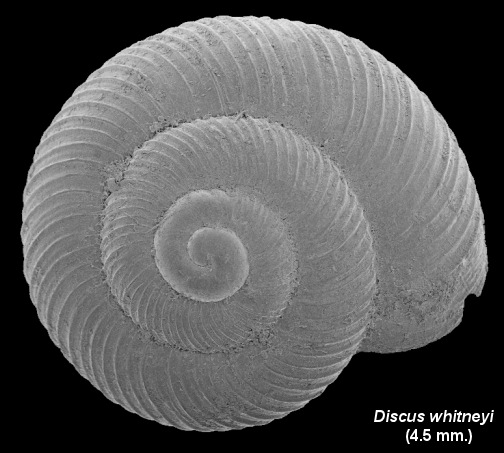Nutrition
Like other gastropods, Discus cronkhitei uses a radula to obtain food. A radula is a tongue-like membrane with thousands of fine teeth that is used for scraping food (Hickman, 2009).
It is known how DIscus cronkhitei acquires its food, but what it eats is still questioned. No sources stated specifically what they eat, but based on what other species in the genus Discus eat, we can conclude they are similar.
According to the Montana Field Guide, a similar species, Discus shimekii, feed primarily on decaying deciduous leaves.
Also according to the Montana Field Guide, Discus brunsoni "feeds most often on plant material on rock surfaces."
By combining these ideas, one can conclude that Discus cronkhitei has a similar diet consisting of a variety of decaying plant material along with plant life growing on rocks.
After obtaining the food, Discus cronkhitei passes its food through the digestive tract. It starts with the radula that scrapes the food into the mouth. After the mouth, the food is in the crop, where a salivary gland secretes enzymes to further digest the food. It then proceeds to the stomach, which is located in the mid-lower portion of the shell. It continues through the intestines in the shell, then is excreted out the anus which is above the head. This phenomenon occurs because gastropods undergo torsion which is a 180° turn of visceral mass such that the anus and excretory pore are located above the head (Hickman, 2009).
The circulatory system of this species is an open circulatory system like other gastropods. This open circulatory system has "blood" called hemolymph that is circulated throughout the visceral mass, by a pericardium enclosed heart, to bring nutrients to cells and remove waste. Most gastropods have a single nephridium, or kidney-like structure, to get rid of nitrogenous waste (Hickman, 2009).
Now you know the type of things what Discus cronkhitei feeds on. But some things also feed on or parasitize this snail.
Want to learn about Interactions
with other organisms?
Or go to the Home page.